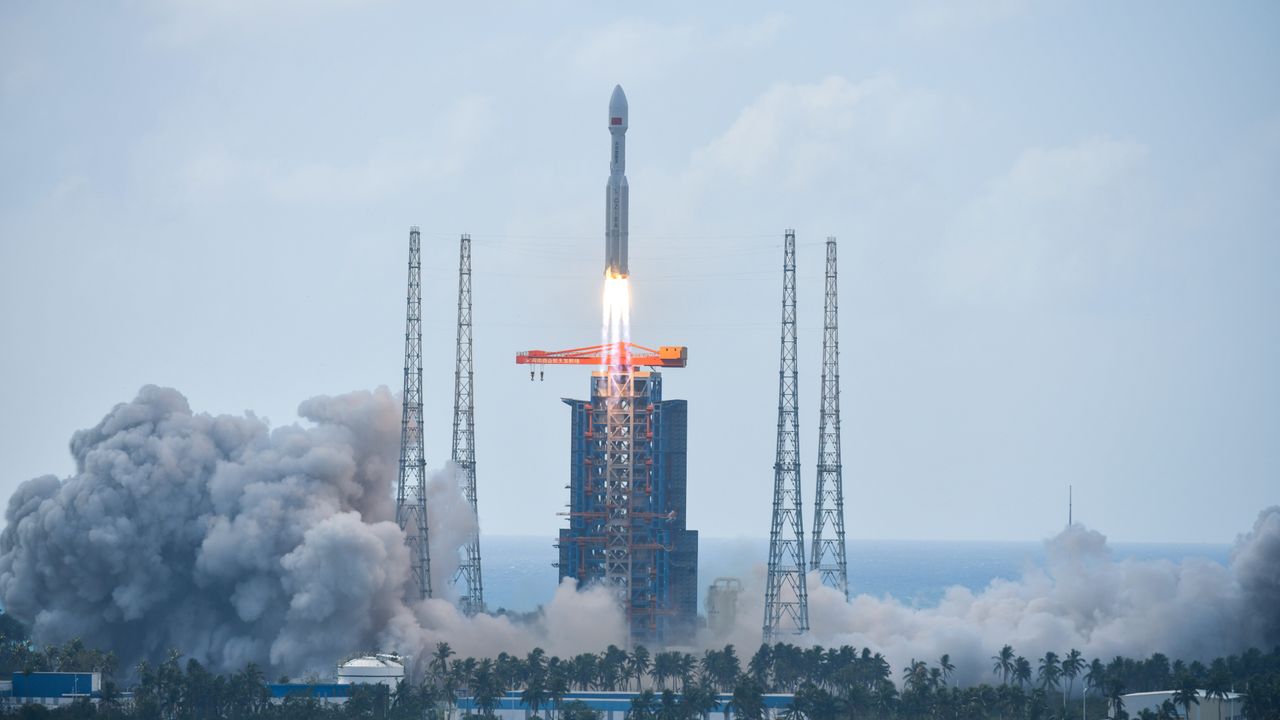Science
China Celebrates 600th Long March Rocket Launch with New Satellites

China marked a significant milestone on October 15, 2025, with the launch of its 600th Long March rocket. A Long March 8A took off from the Wenchang Space Launch Center on Hainan Island at 21:33 EDT (01:33 GMT on October 16 and 09:33 local time). This mission successfully deployed a batch of satellites for the Guowang broadband network, further expanding China’s efforts in satellite communications.
The Long March rocket family has a storied history, beginning with its first flight on April 24, 1970. That mission successfully placed the country’s first satellite, Dong Fang Hong 1, into orbit. Over the past 55 years, China has developed over 20 different types of Long March rockets, with 16 currently active, according to China Daily.
The pace of launches has increased dramatically in recent years. The initial 100 missions took 37 years, while the subsequent milestones were achieved in progressively shorter timeframes. The second 100 launches occurred in just 7.5 years; the next 100 were completed in just over four years. Notably, the most recent 100 launches took only one year and 10 months. Overall, the Long March fleet boasts an impressive success rate of approximately 97%.
While the Long March rocket family is a major player in space launches, it is not the most frequently flown. That title belongs to the Soviet/Russian Soyuz rocket line, which has completed over 1,700 missions since its debut in November 1966. Other notable rocket families that have reached the 600 mark include the Soviet Union’s Kosmos family and the American Atlas series. SpaceX is also approaching this milestone with its Falcon rockets, having conducted over 570 flights to date, including an impressive 130 Falcon 9 launches so far this year.
The Guowang network, translating to “national network,” is a developing broadband megaconstellation designed to operate in low Earth orbit (LEO). Managed by the state-run company China Satnet, the network aims to consist of about 13,000 satellites. The recent launch successfully deployed the 12th group of Guowang satellites, each batch typically comprising eight to ten spacecraft.
In addition to Guowang, another Chinese internet constellation known as Qianfan, or “Thousand Sails,” is in development and also aims for a similar number of satellites. Both networks are modeled after SpaceX’s Starlink megaconstellation, which currently operates more than 8,600 spacecraft and continues to expand rapidly. Approximately 70% of this year’s Falcon 9 launches have been dedicated to Starlink missions.
The successful launch of the 600th Long March rocket illustrates China’s growing capabilities in space technology and satellite communications. As the nation continues to advance its space initiatives, the implications for global broadband access and satellite-based services are profound, positioning China as a significant player in the international space arena.
-

 Science2 months ago
Science2 months agoInventor Achieves Breakthrough with 2 Billion FPS Laser Video
-

 Health2 months ago
Health2 months agoCommunity Unites for 7th Annual Into the Light Walk for Mental Health
-

 Top Stories2 months ago
Top Stories2 months agoCharlie Sheen’s New Romance: ‘Glowing’ with Younger Partner
-

 Entertainment2 months ago
Entertainment2 months agoDua Lipa Aces GCSE Spanish, Sparks Super Bowl Buzz with Fans
-

 Health2 months ago
Health2 months agoCurium Group, PeptiDream, and PDRadiopharma Launch Key Cancer Trial
-

 Top Stories2 months ago
Top Stories2 months agoFormer Mozilla CMO Launches AI-Driven Cannabis Cocktail Brand Fast
-

 Entertainment2 months ago
Entertainment2 months agoMother Fights to Reunite with Children After Kidnapping in New Drama
-

 World2 months ago
World2 months agoIsrael Reopens Rafah Crossing After Hostage Remains Returned
-

 Business2 months ago
Business2 months agoTyler Technologies Set to Reveal Q3 Earnings on October 22
-

 World2 months ago
World2 months agoR&B Icon D’Angelo Dies at 51, Leaving Lasting Legacy
-

 Health2 months ago
Health2 months agoNorth Carolina’s Biotech Boom: Billions in New Investments
-

 Health2 months ago
Health2 months agoYouTube Launches New Mental Health Tools for Teen Users









